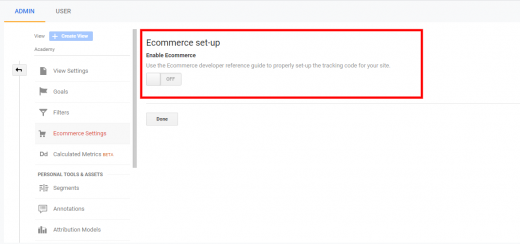9 Amazing Ways to Use Google Analytics for E-Commerce
— May 6, 2019

Google Analytics allows you to access detailed information regarding your online store’s traffic and sales.
It doesn’t matter what type of business you have or what your selling, Google Analytics is a staple component of your marketing strategy that will allow you to monitor and grow online conversions.
Google Analytics can seem a bit confusing at times even for a seasoned analyst. Sometimes it’s hard to know which metrics or reports are relevant to your e-commerce store, and which ones are just fluff.
In this article, I’ll be showing nine ways to use Google Analytics for your e-commerce store to help you get started today.
If you’re new to Google Analytics or you’d like to create an account you can use this guide to help set up Google Analytics in under 15 minutes. to follow along better in this article.
1. Use Google Analytics to Track Your Marketing campaigns.
With the power of Google Analytics, you can track any of your store’s online marketing campaigns (with or without Google Adwords/AdSense).
Track which landing pages and sources of the campaigns people interact with to complete a purchase. Giving a detailed data to see which funnels are the most effective and which aren’t so you can do A/B testing.
Maybe you already have a landing page running and your not sure what to do? Why not try these 7 Step from a Conversion Playbook To Quickly Optimize Your Landing Pages to point you in the right direction.
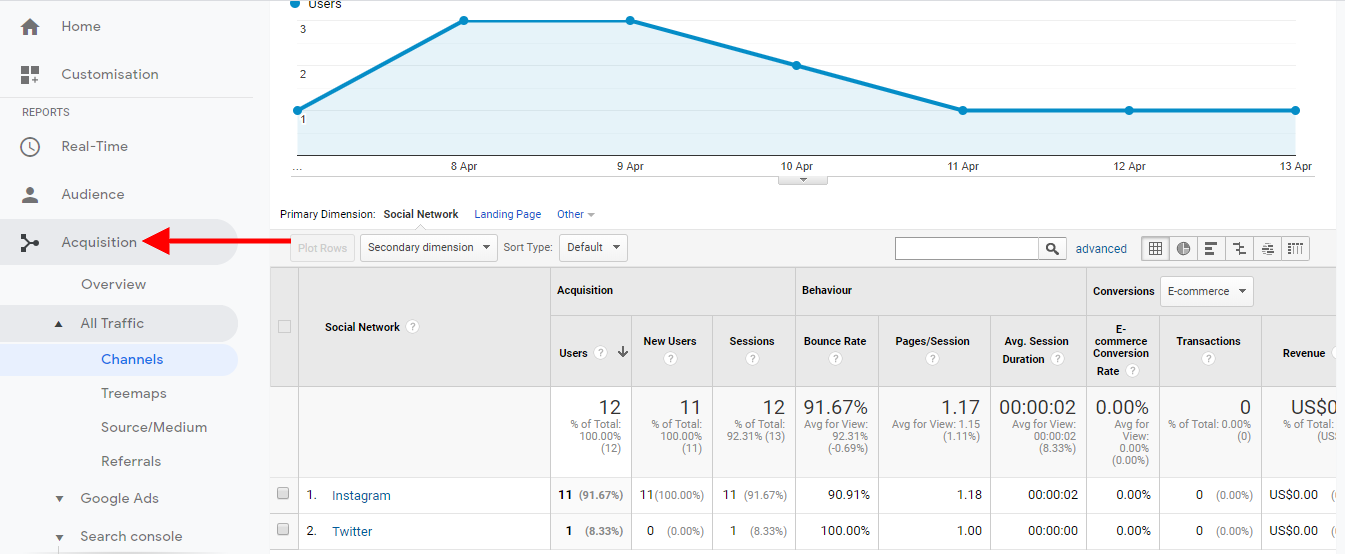
If you have a video or youtube channel included in your campaign you can use Google Analytics to track how many people watched your video or completed a purchase because of that video.
If you’re looking for amazing landing pages to use with your market campaigns or contest to host, Wishpond provides all the tools and features you need from start to finish with an easy Google Analytics integration so you can measure your results.
You can also use Google Analytics to help you know which channels to retarget customers to bring back lost sales.
I said it before, and I’ll say it again when it comes to conversions and sales. Google Analytics is your partner in crime.
2. Use Google Analytics to Track Your Sales and Revenue
For any business owner tracking revenue and sales is important. You want to know if your meeting your financial goals or see where you’re falling short.
So how do you use Google analytics to track your website’s revenue accurately?
First, you have to ask yourself the following questions:
- What are the landing pages that are getting the most conversions?
- How do people arrive on these pages?
- Which products represent the highest value to your customers in your store?
- How do you track your online revenue?
Stop yourself from diving into endless reports, and try to answer the questions above, from there best action to take after would be to set up a goal in Google Analytics. based on your answers. Your goal can be tailored to track completed transactions, which allows you to track your landing pages and products customer make on purchases.
The second step would be to set up your Google Analytics E-commerce tracking, which we’ll get to further in this article, on your website to help you accurately track your sales. From there you can use the “Conversion” tab to view your “Goals”, “Sales Performance”, and “Transactions” reports.
3. Use Google Analytics to Track Your Website Traffic
When it comes to measuring website traffic for e-commerce stores, Google Analytics is the undisputed champion. It gives detailed information on how many people have visited your online store, what pages they’ve been on, demographic details of users and various traffic sources.
You can use your Google Analytic reports learning about your website traffic sources. Google Analytics shows you can show you detailed reports on:
*Organic Traffic *Referral Traffic *Social Traffic *Direct Traffic *Email Traffic
You can compare different website site traffic sources and time periods (i,e 30 days or last 7 days) to see if your website traffic is declining or increasing. This can help you to track:
- Where on your site or landing pages might be affecting your sales
- How well it’s performing, what links are providing the most traffic *If you need to focus heavily on link building. *Notice any pages with errors that need fixing. *Create a better sales or marketing funnel for your online store.
For example, you’re running a giveaway contest on your website, but you see more traffic coming from your email newsletter when compared to other traffic sources, which would naturally be a cause for concern.
Your website traffic reports can tell if people are having problems accessing your giveaway from other platforms or you might need to promote your giveaway as heavily as your emails to get the same results.
To view your website traffic click on the “Real-Time” tab and check each report to learn about your traffic. With it, you can understand who and where your potential customers are coming from, which brings me to my next point.
4. Use Google Analytics to Understand Your Target Audience
Use Google Analytics data to get a clear picture of who your potential customers really are.
You can leverage Google Analytics to discover the following about your website visitors:
Gender
Compare data to see if your traffic is mainly made up of male or female visitors. This report can guide you to see if you’re attracting the right gender(s) to your store or how you can use it to tailor your content. You can find this report under Audience > Demographics > Gender.
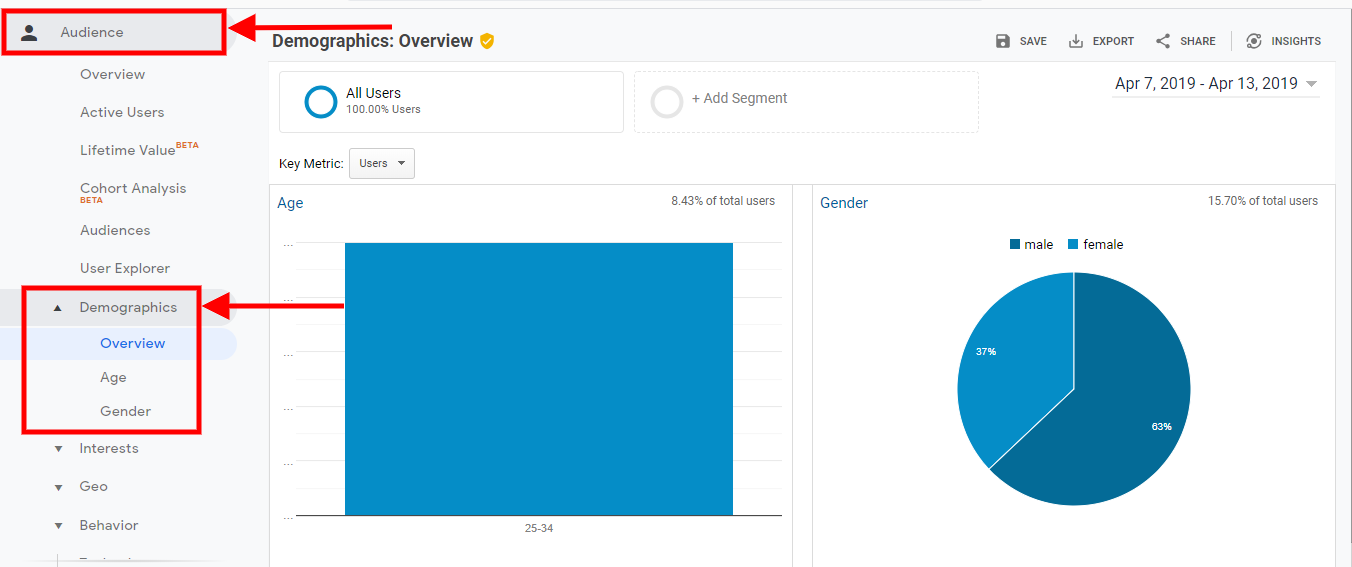
Age Range
Take a glimpse at your audience age range so you can understand which age ranges are most likely to visit your site. You can find this report under Audience > Demographics > Age.
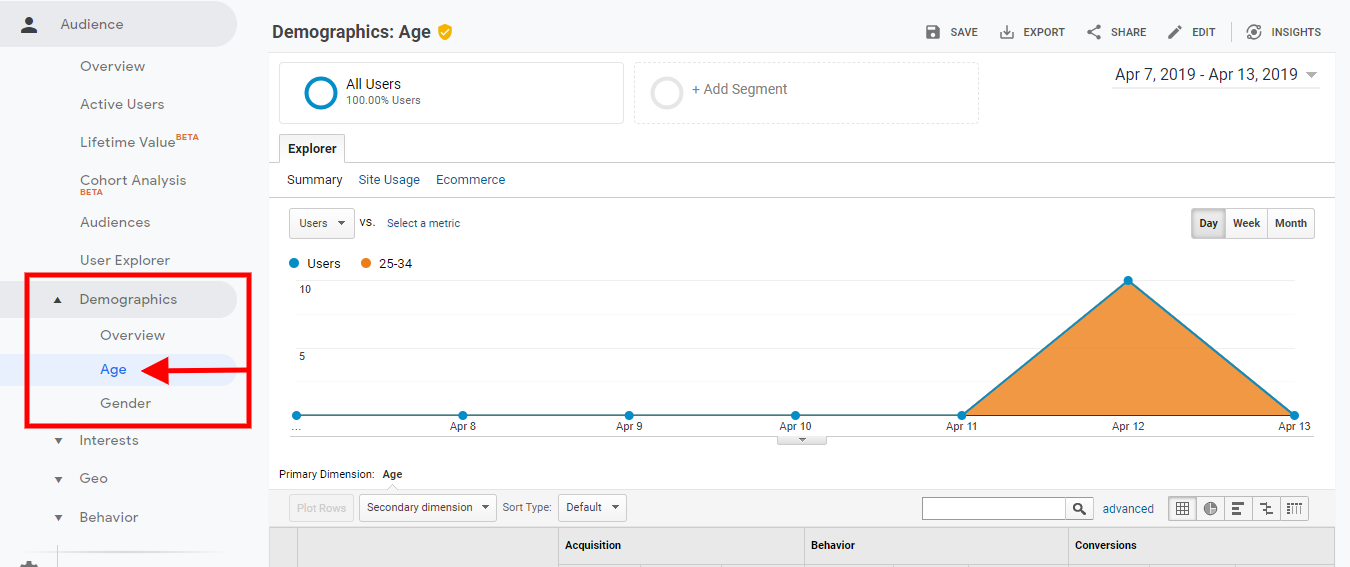
Devices
See what devices (even the OS system) your visitors are using the most to visit your store. Now more than ever online shoppers are turning to mobile devices compared to desktops. This means having a mobile-friendly store is an essential part of the buyer’s journey and capturing sales.
You can find this report under Audience > Mobile > Devices
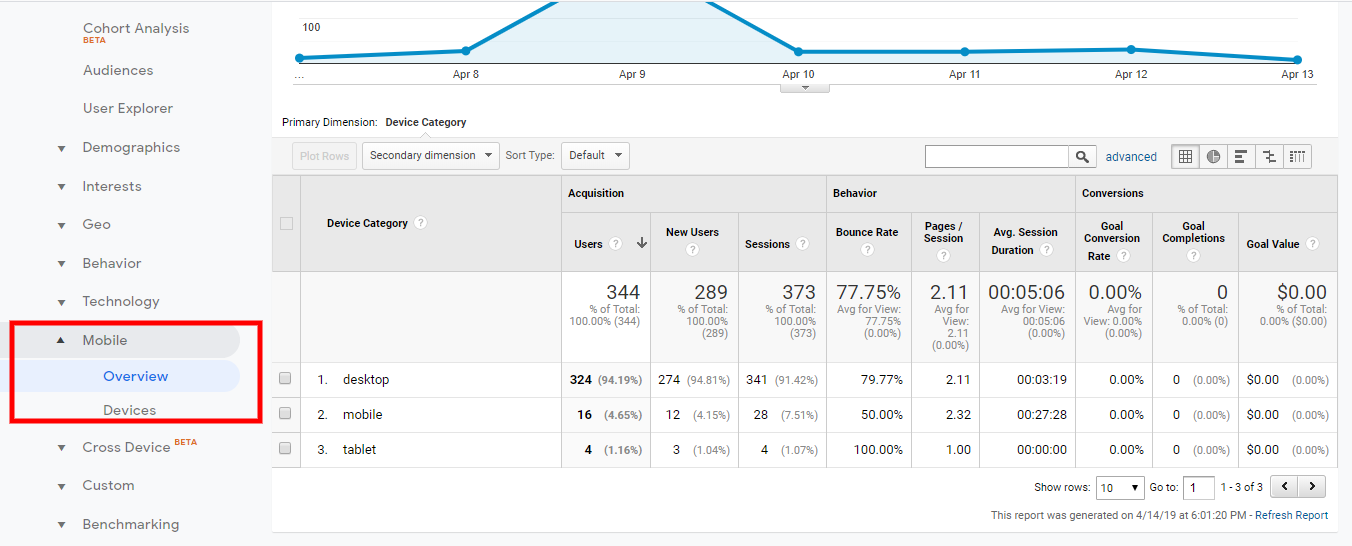
Interest Reports in Google Analytics will tell you your users’ interests on other parts of the internet. This will help you identify a more specific target audience, cross or upselling opportunities, better blog content ideas.
You can find this report under Audience > Interest > Overview.
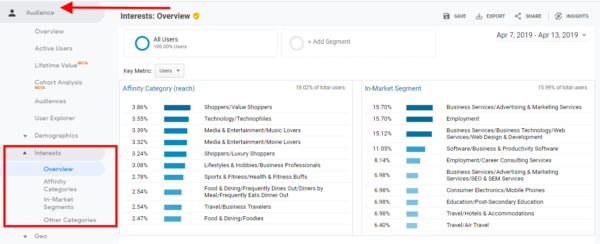
5. Use Google Analytics to Learn About Customers Shopping Behavior.
If you’re not satisfied with the demographics basics, you can learn more about your customers by taking a look at their shopping behavior. Learn about the type of products they view, click on, and add to cart all while tracking checkouts and transactions.
To find this report go to Conversions > E-commerce> Shopping Behaviour.
Use the “Shopping Behaviour” report and the Behaviour tab in Google Analytics to understand your buyer’s journey for both new and returning customers on your site.
You’ll only see this report if you enabled your E-commerce setting for your Google Analytics. From there you can find it with Conversions > E-commerce > Shopping Behaviour.
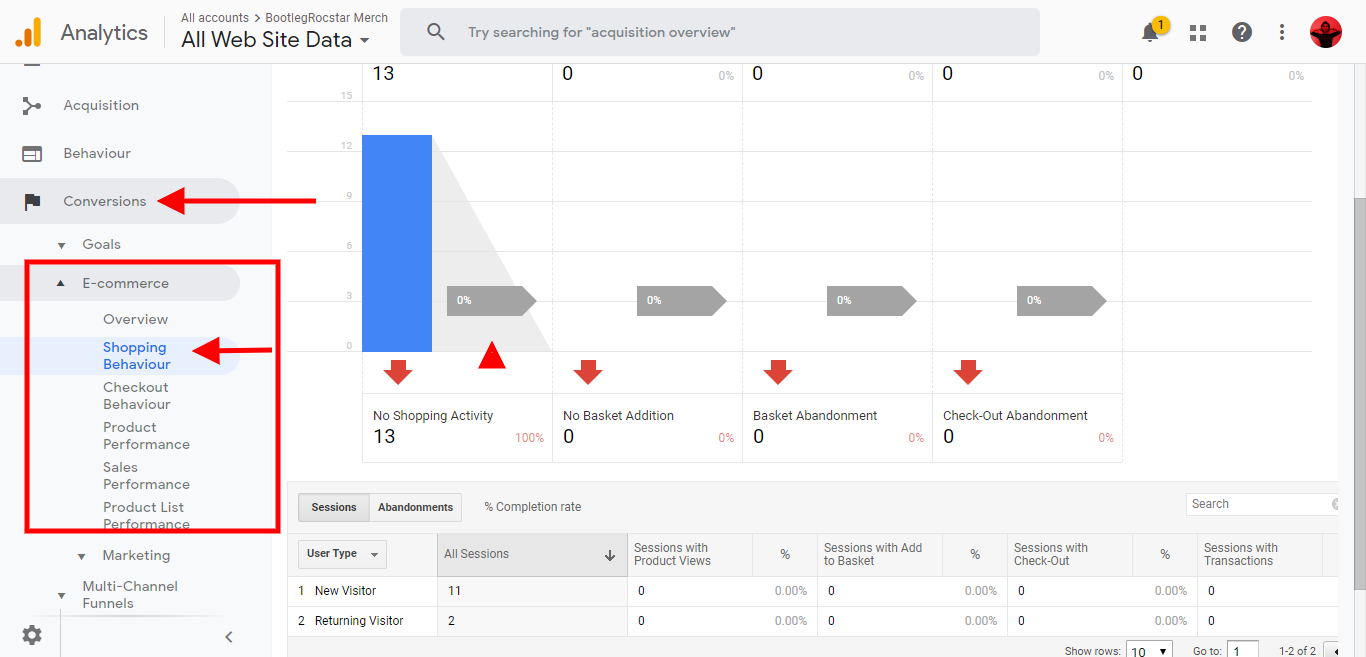
6. Use Google Analytics for Specialized SEO & Keyword Search
The Google Analytics “Site Search” report gives an overview of the terms, keywords and pages customers are searching for the most on your website.
Instead of relying heavily on Google Keyword Search you can get insight from visitors coming to your page. Site Search helps you to optimize your website so that you can rank higher in search for topics, features or products that customers are actually looking for.
To find this report go to Behaviour > Site Search.
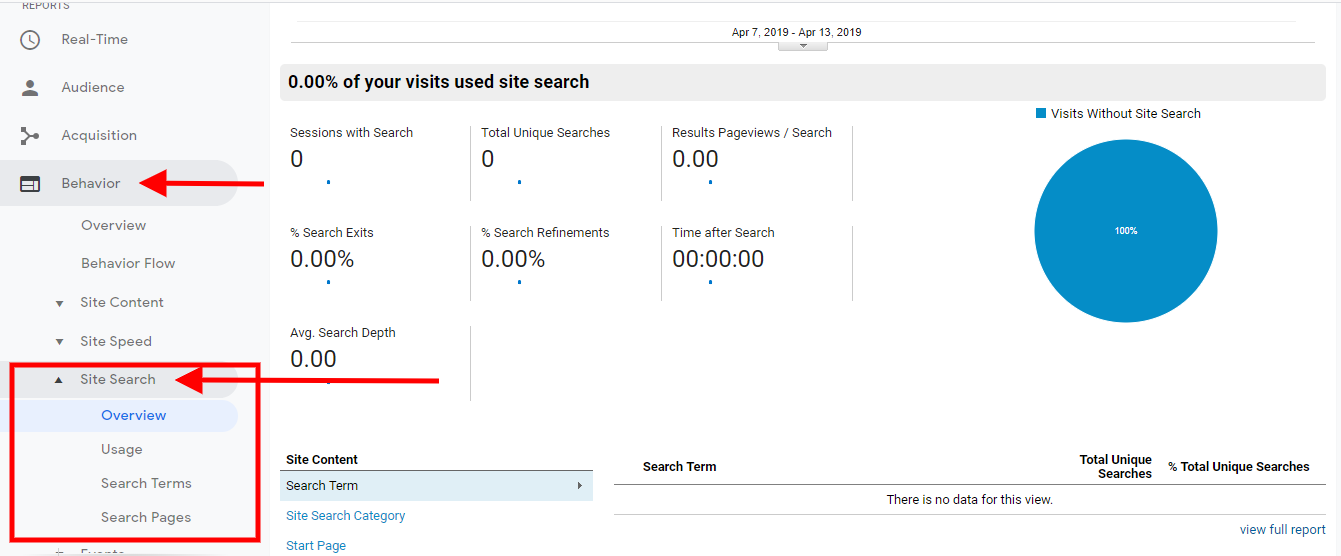
Combine your “Interest” report from the Audience tab, and your “Search Site” report as an excellent way to gather the right keywords and phrases to optimize your e-commerce stores specifically for future customers.
7. Use Google Analytics to Track Shopping Cart Abandonment
Shopping cart abandonment is a problem for all e-commerce sites, big and small. It’s been estimated over the past nine years that more than $ 260 billion in sales were recoverable through better checkout systems.
Studies show that almost 70% of online purchases are left unfinished. And if you’re not taking this number seriously, chances are, you’re losing more money than you thought.
Using Google Analytics to track your online store’s shopping cart abandonment can help you to catch the problem before it becomes worse.
To track your shopping cart abandonment with Google Analytics, first, you’d need to create a Google Analytics Goal, where a visitor needs to complete an order/purchase. If you’ve just created your goal for the first time, you’ll need to give GA some time to populate the report first.
After that you can view reports like “Goals” and “Funnel Visualization” in the “Conversion” tabs to track which pages customers fall off short.
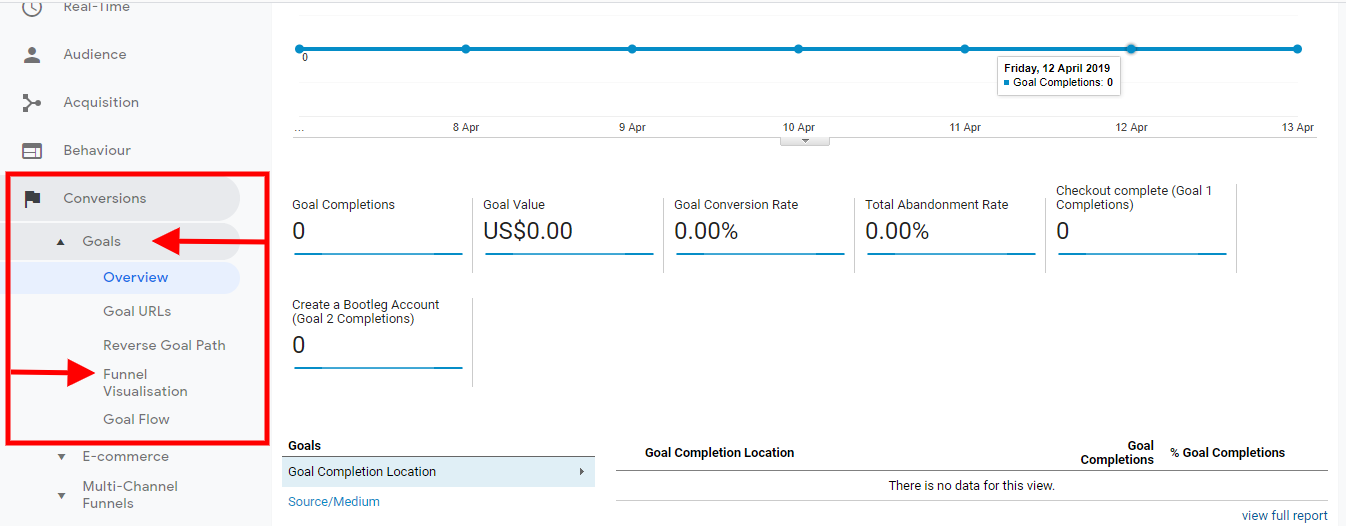
8. Use Google Analytics with Google AdWords & AdSense for Better Ads
Linking you’re Google Analytics account with your AdWords accounts allows you to access powerful information to create PPC campaigns and Google Ads that convert. Because the data from Google Analytics data is specialized to your online store, you can find keywords that result in better conversions.
Combined this with your AdSense account, you can find useful data results including the ability to view your online store’s earnings based on how many users visits you have/ or had instead of relying on page impressions.
If your interested in seeing it in action you can use this guide to Link AdSense with Google Analytics to Track Earnings Per Page, it’s pretty easy to do.
How Connect Google Analytics with your Ecommerce store
I’ve listed the best step-by-step guides you can use to connect Google Analytics to your e-commerce store. If you have more than one e-commerce store, you choose to link it to one or two different Google Analytic accounts.
- Add Google Analytics to my 3dcart
- Add Google Analytics to my HTML Website
- Add Google Analytics to my Shopify
- Add Google Analytics to my Square Space
- Add Google Analytics to my Woo-Commerce
- Add Google Analytics to my WordPress
- Add Google Analytics to my Wix
How to Connect Google Analytics to Your Social Media
Google Analytics isn’t just for your website, it’s can also be used for your website’s social media. Here’s a list of the best ways to use:
- Google Analytics on YouTube
- Google Analytics on Facebook
- Google Analytics on Twitter
- Google Analytics on Instagram
- Google Analytics on Pinterest
Top Google Analytics Reports for E-commerce Stores
In order for you to see some of these reports or gather the data you need for them, you’ll have to set up Google Analytics e-commerce tracking.
Set up E-commerce Tracking in Google Analytics in 3 Easy Steps
Step 1. After creating your Google Analytic, go to the “Admin” Section which is shown on the top right side. Under “View” select “E-commerce Setting.”
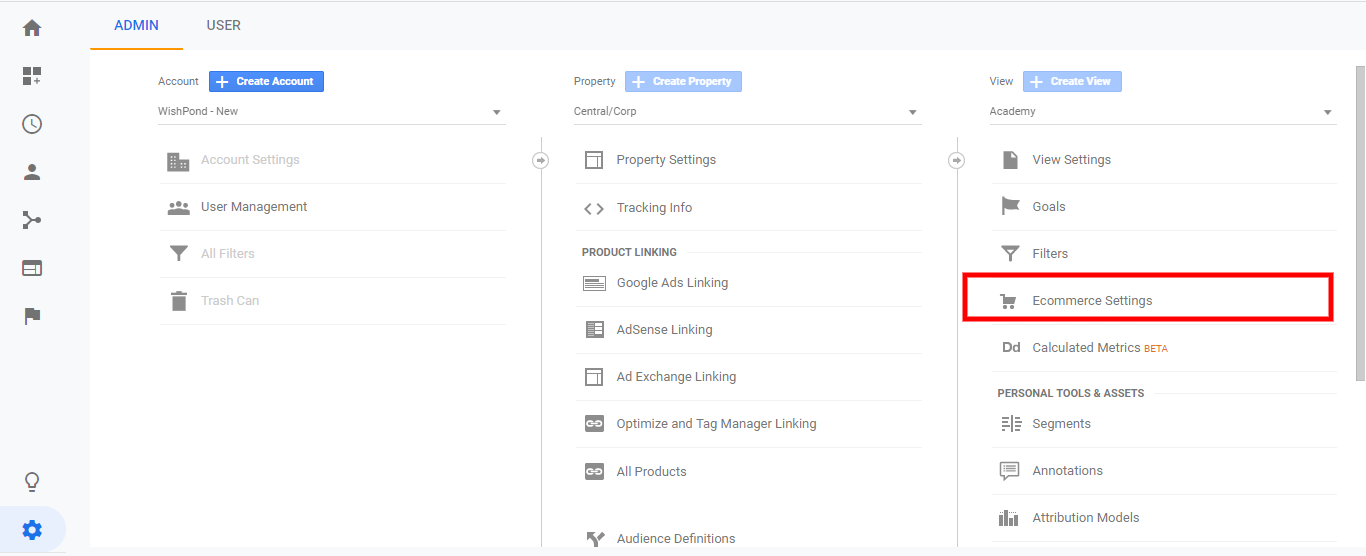
Step 2. In the third column on the right side, you can see the “Ecommerce tab,” click on it and set it to “YES.” Now you are allowed to see the information about transactions. You can also add funnel steps to get more detailed reports.
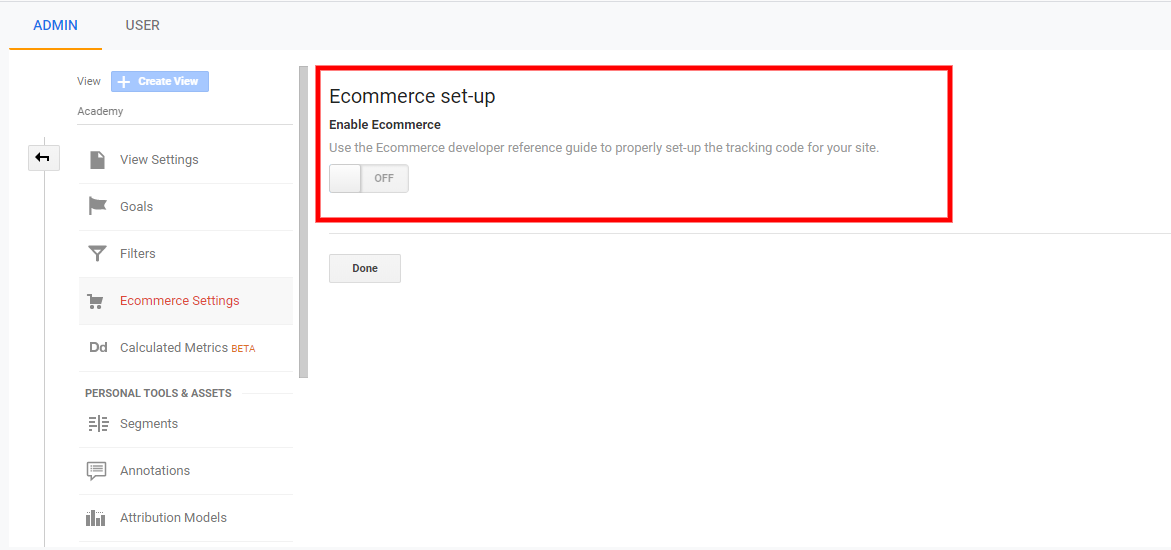
Step 3. You can view your e-commerce reports under the “Conversion” tab on the left-hand side of your page. You might not see your reports fill up as yet so give Google Analytics some time to gather the data from your website.
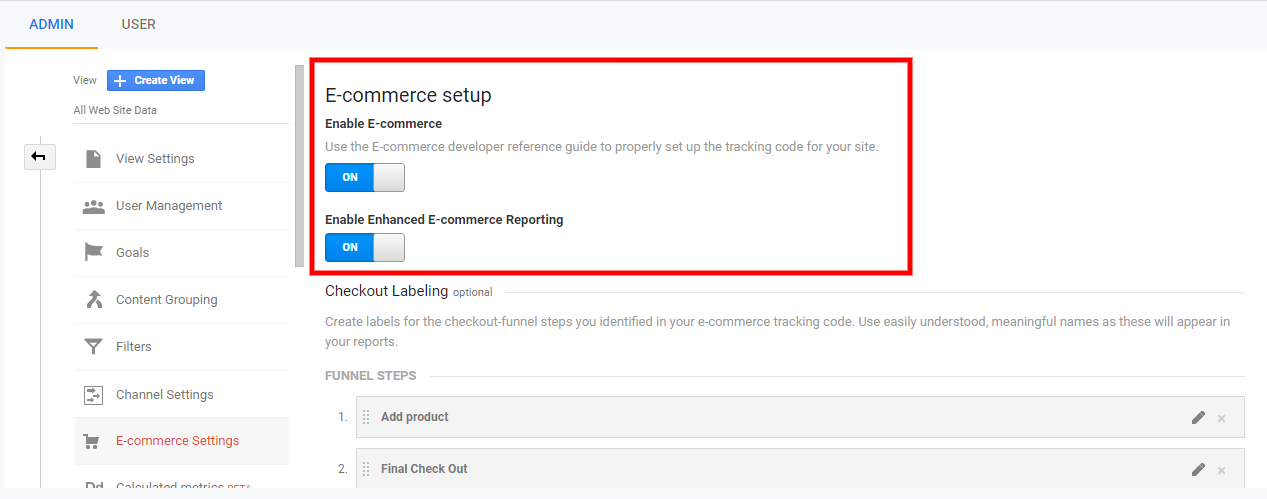
Pro Tip: It’s essential that you add your E-commerce tracking code to your website or Google Tag Manager for more accurate data collection and reports.
Here are the following reports that you should check for your e-commerce store:
- Shopping Behavior Report
- The Checkout Behavior Analysis Report
- The Product Performance Report
- The Sales Performance Report
- Product List Performance Report
Summary
Here are nine amazing ways to use Google Analytics for e-commerce:
- Use Google Analytics to Understand Your Buyer’s Journey
- Use Google Analytics to Track Your Sales and Revenue
- Use Google Analytics to Track Your Website Traffic
- Use Google Analytics to Understand Your Target Audience
- Use Google Analytics to Learn About Customers Shopping Behavior.
- Use Google Analytics for Specialized SEO & Keyword Search
- Use Google Analytics to Track Shopping Cart Abandonment
- Use Google Analytics with Google AdWords & AdSense for Better Ads
- Use Google Analytics to Track Your Marketing campaigns.
Knowing how to use Google Analytics for your e-commerce store is only half the fight. It’s what you do with the data that matter the most.
Take the information and make actionable steps to optimize your ecommerce store for better conversions and buyer experience.
Are you currently using Google Analytics for your online store, which tip(s) do you think you’ll try today? I’d love to know.
Digital & Social Articles on Business 2 Community
(34)

